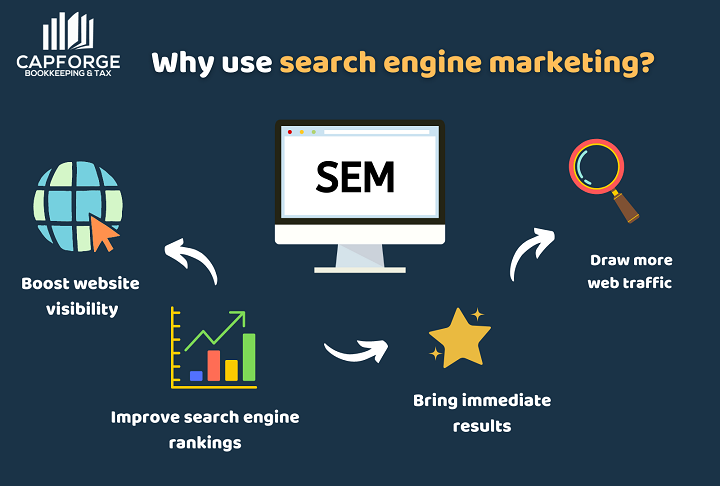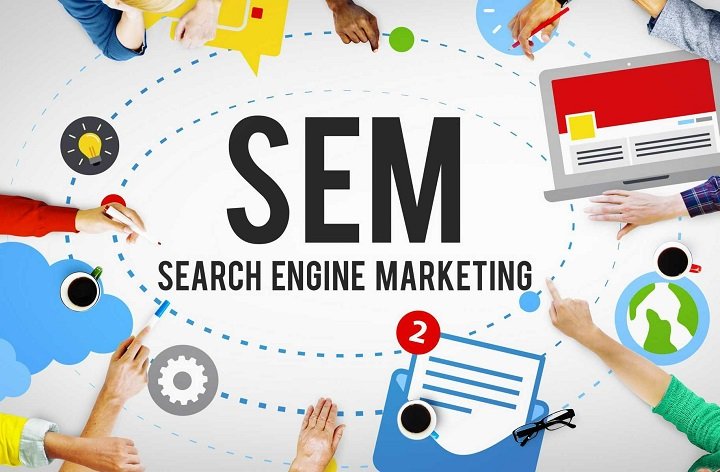SEM Search engine Marketing (SEM) is a powerful tool that can help your business reach new heights by increasing its visibility on search engines. In this comprehensive guide, we’ll explore what SEM is, why it’s important, and how you can effectively implement it to drive traffic and boost conversions.
What is Search Engine Marketing (SEM) of SEM Search engine

SEM is a digital marketing strategy that involves promoting websites by increasing their visibility in search engine results pages (SERPs) through paid advertising. Unlike Search Engine Optimization (SEO), which focuses on organic traffic, SEM leverages paid methods to ensure your website appears prominently when users search for specific keywords.
Why is SEM Important?
In today’s digital landscape, consumers often turn to search engines to find products or services. By utilizing SEM, businesses can place their ads in front of potential customers at the exact moment they’re searching for related offerings. This targeted approach increases the likelihood of attracting interested visitors and converting them into customers.
Key Components of SEM
-
Pay-Per-Click (PPC) Advertising: This is the most common form of SEM. Advertisers bid on keywords, and when a user searches for those terms, their ads appear in the sponsored section of the SERPs. The advertiser pays a fee each time their ad is clicked.
-
Keyword Research: Identifying the right keywords is crucial. Tools like Google Keyword Planner can help determine which terms your target audience is using, allowing you to bid on keywords that are relevant to your business.
-
Ad Creation: Crafting compelling ads that resonate with your audience is essential. Your ad copy should be clear and concise and include a strong call to action to encourage clicks.
-
Landing Pages: Once a user clicks on your ad, they should be directed to a landing page that aligns with the ad’s message. A well-designed landing page can significantly increase conversion rates.
Best Practices for Effective SEM of SEM Search engine
-
Conduct Thorough Keyword Research: Use tools like Ubersuggest or Ahrefs to find high-traffic, relevant keywords. Focus on terms that your potential customers are likely to use when searching for your products or services.
-
Create Engaging Ad Copy: Your ads should address the needs and pain points of your audience. Highlight the benefits of your offerings and include a clear call to action.
-
Optimize Landing Pages: Ensure that your landing pages are user-friendly, load quickly, and provide valuable information that matches the intent of your ads.
-
Monitor and Adjust Campaigns: Regularly review your campaign performance. Analyze metrics like click-through rates (CTR) and conversion rates to identify areas for improvement.
-
Utilize A/B Testing: Test different versions of your ads and landing pages to see which perform better. This can provide insights into what resonates most with your audience.
Common SEM Mistakes to Avoid
-
Ignoring Negative Keywords: Negative keywords prevent your ads from showing up in irrelevant searches. For example, if you sell luxury watches, you might want to exclude terms like “cheap” or “discount.”
-
Overlooking Mobile Users: Ensure your ads and landing pages are optimized for mobile devices, as a significant portion of searches are conducted on smartphones.
-
Setting and Forgetting Campaigns: SEM requires ongoing management. Regularly monitor your campaigns and make adjustments as needed to maintain optimal performance.
The Future of SEM of SEM Search engine

As search engines evolve, so does SEM. Staying updated with the latest trends and best practices is crucial. For instance, the rise of voice search means that long-tail keywords and natural language phrases are becoming more important. Additionally, advancements in artificial intelligence and machine learning are influencing how ads are targeted and displayed.
Conclusion
Search Engine Marketing is a dynamic and effective strategy for increasing your online visibility and attracting potential customers. By understanding its components and implementing best practices, you can create successful SEM campaigns that drive traffic and boost conversions.
For more in-depth information on SEM strategies, you can refer to resources like HubSpot’s guide on Search Engine Marketing.
Additionally, WordStream offers valuable insights on how to do SEM right.
Remember, the digital marketing landscape is always changing, so continuous learning and adaptation are key to staying ahead.







